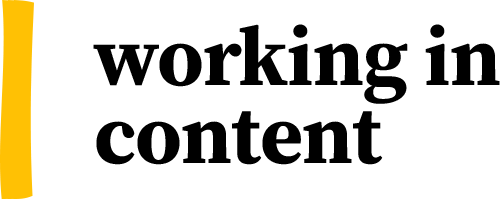Content Designer roles are experiencing significant demand across industries, particularly in technology, financial services, and retail sectors. These positions combine traditional content strategy with UX writing and information architecture to create user-centered digital experiences. The role continues to evolve with increasing emphasis on accessibility, AI integration, and cross-functional collaboration. Content Designers are increasingly expected to not just write content but also shape product strategy, conduct user research, and deliver measurable business impact through clear, effective communication.
Notify me about new jobs...
Get email notifications when new jobs matching your search are available.
Notify meThe Content Designer job market is experiencing robust growth, with compensation reflecting the increasing value organizations place on these roles. In the United States, base salaries typically range from $55,000 for entry-level positions to upwards of $250,000 for principal-level roles. Major tech hubs like San Francisco, New York, and Seattle tend to offer higher compensation packages, while emerging tech centers provide competitive salaries with lower cost of living considerations.
Beyond base salary, most organizations offer comprehensive benefits packages that recognize the strategic importance of content design talent. These typically include equity compensation, performance bonuses, flexible work arrangements, and substantial professional development allowances. Companies are increasingly offering specialized benefits such as conference attendance, industry certifications, and advanced training programs to support continuous learning in this rapidly evolving field.
The technical requirements for Content Designers have expanded significantly. While strong writing and editing skills remain fundamental, today's Content Designers must be proficient in UX/UI design tools, particularly Figma, and comfortable working with content management systems. There's a growing emphasis on understanding accessibility standards and information architecture principles, as well as facility with data analytics and A/B testing methodologies. The emergence of AI and machine learning tools has added another layer of complexity, requiring Content Designers to understand and leverage these technologies effectively.
Core responsibilities have evolved beyond traditional content creation to encompass strategic planning and system-level thinking. Content Designers are now expected to develop comprehensive content strategies, maintain design systems, and ensure consistency across multiple platforms and touchpoints. They play a crucial role in user research and testing, working closely with product teams to validate and iterate on content solutions. The ability to collaborate effectively with cross-functional teams, from engineers to product managers, has become increasingly important.
Industry trends reflect the maturing of the content design field. Organizations are investing heavily in AI-powered content tools and automation, while maintaining a strong focus on accessibility and inclusive design. There's growing recognition of the need for scalable content frameworks and design systems to support rapid product development. The rise of conversation design and voice interfaces is creating new opportunities and challenges for Content Designers, requiring expertise in natural language processing and conversational UI.
The work environment for Content Designers has transformed significantly, with hybrid arrangements becoming the norm rather than the exception. This shift has emphasized the importance of strong communication skills and the ability to collaborate effectively in distributed teams. Agile methodologies dominate, requiring Content Designers to be comfortable with rapid iteration and data-driven decision making. The field's dynamic nature demands continuous learning and adaptation, with successful Content Designers regularly expanding their skillsets to encompass new tools and technologies.
Looking ahead, the Content Design field shows no signs of slowing down. As digital products become increasingly complex and user expectations continue to rise, the demand for skilled Content Designers who can create clear, effective, and inclusive user experiences will only grow. The role's evolution from tactical execution to strategic partnership suggests that Content Designers will play an even more crucial role in shaping the future of digital products and services.

